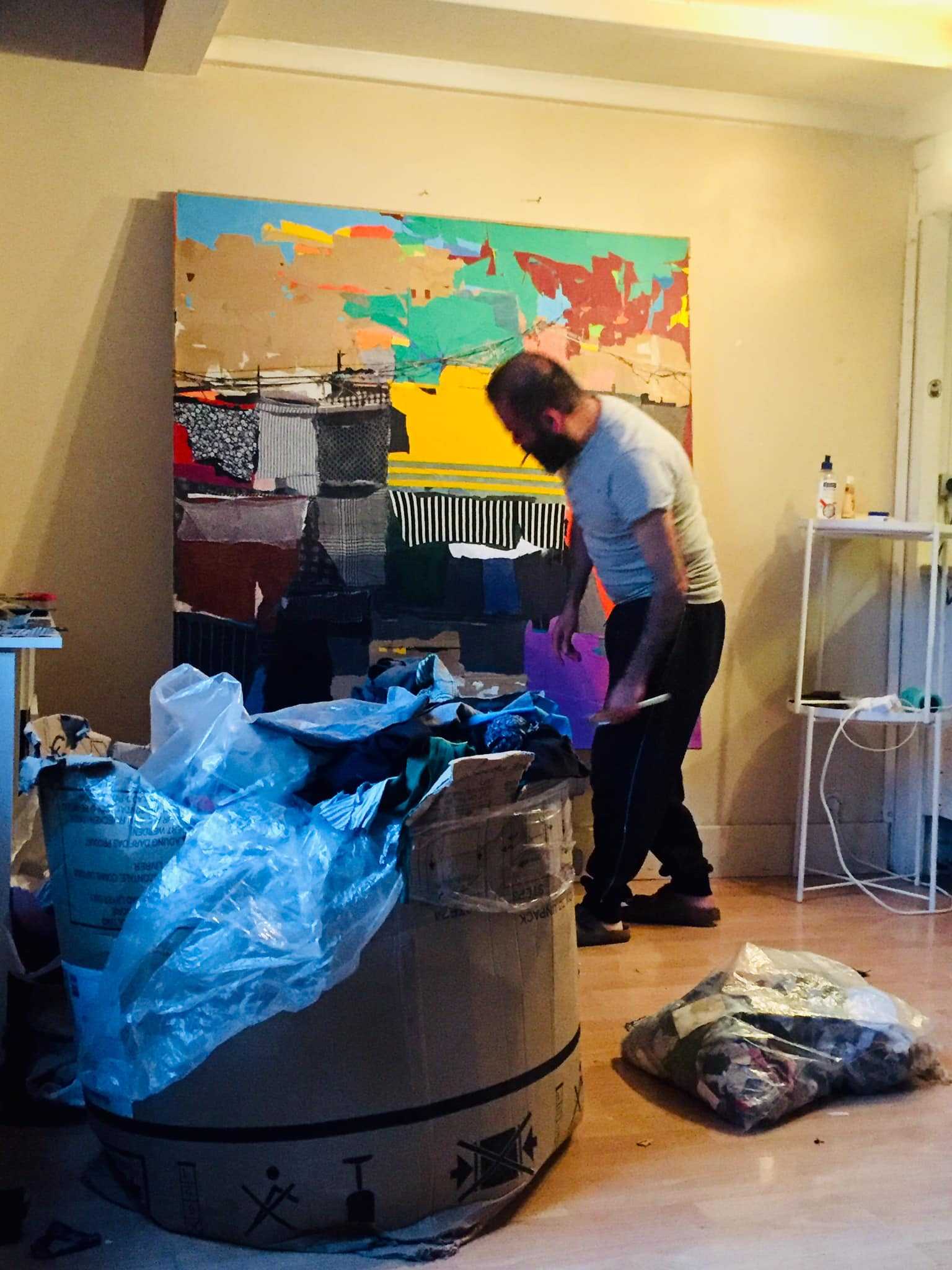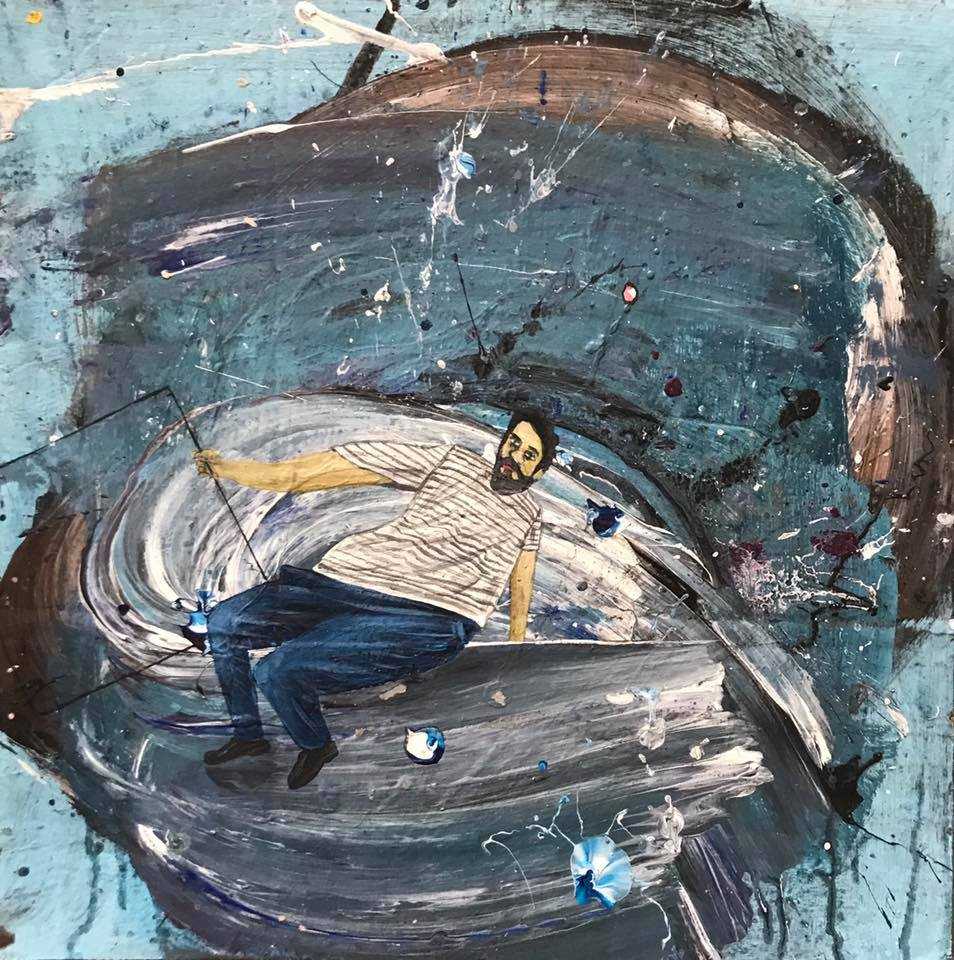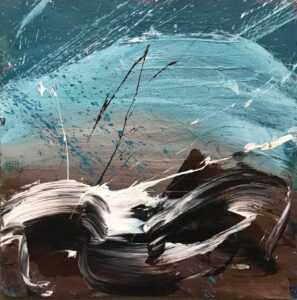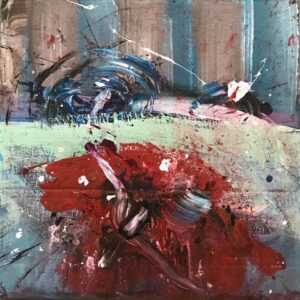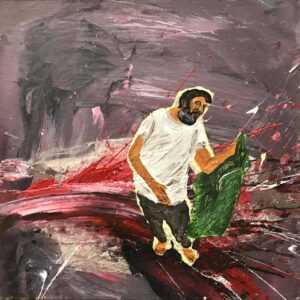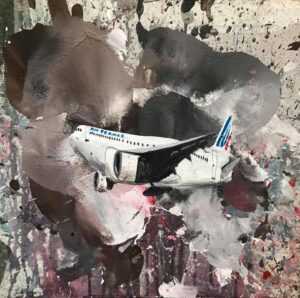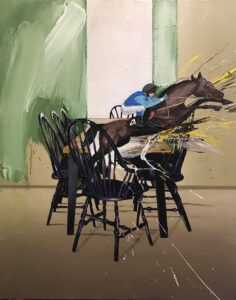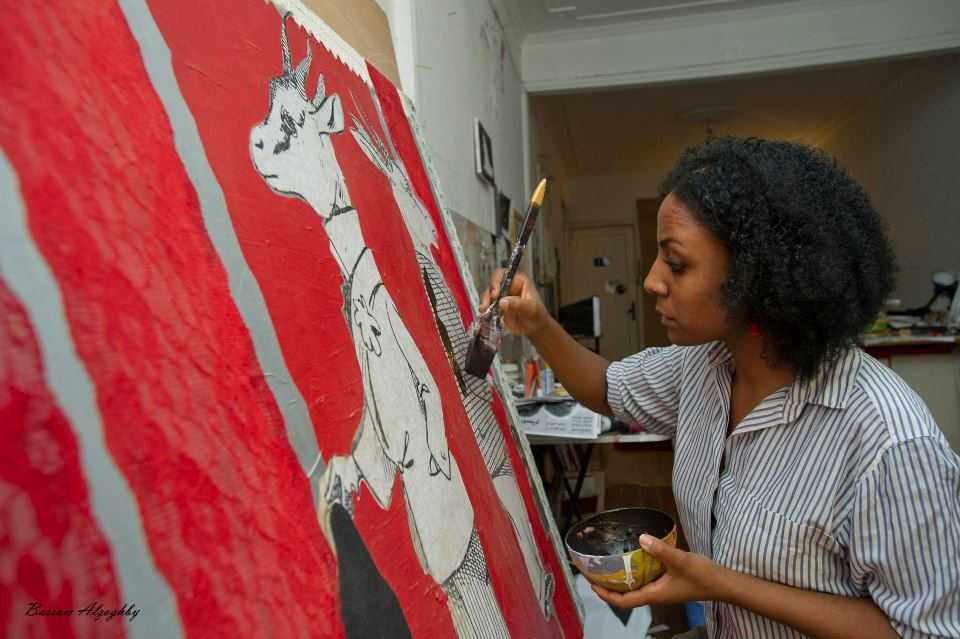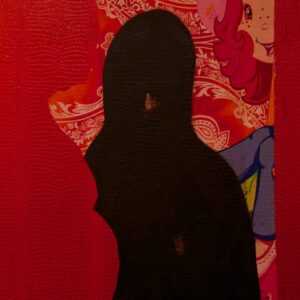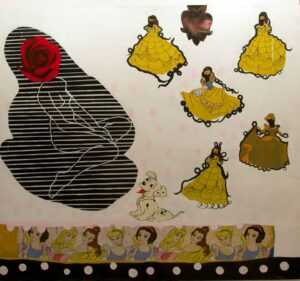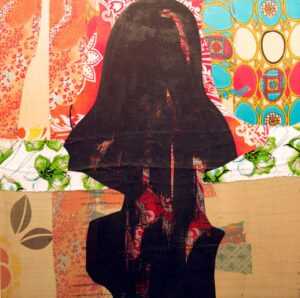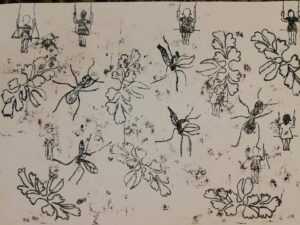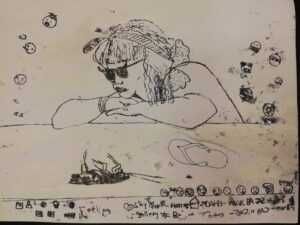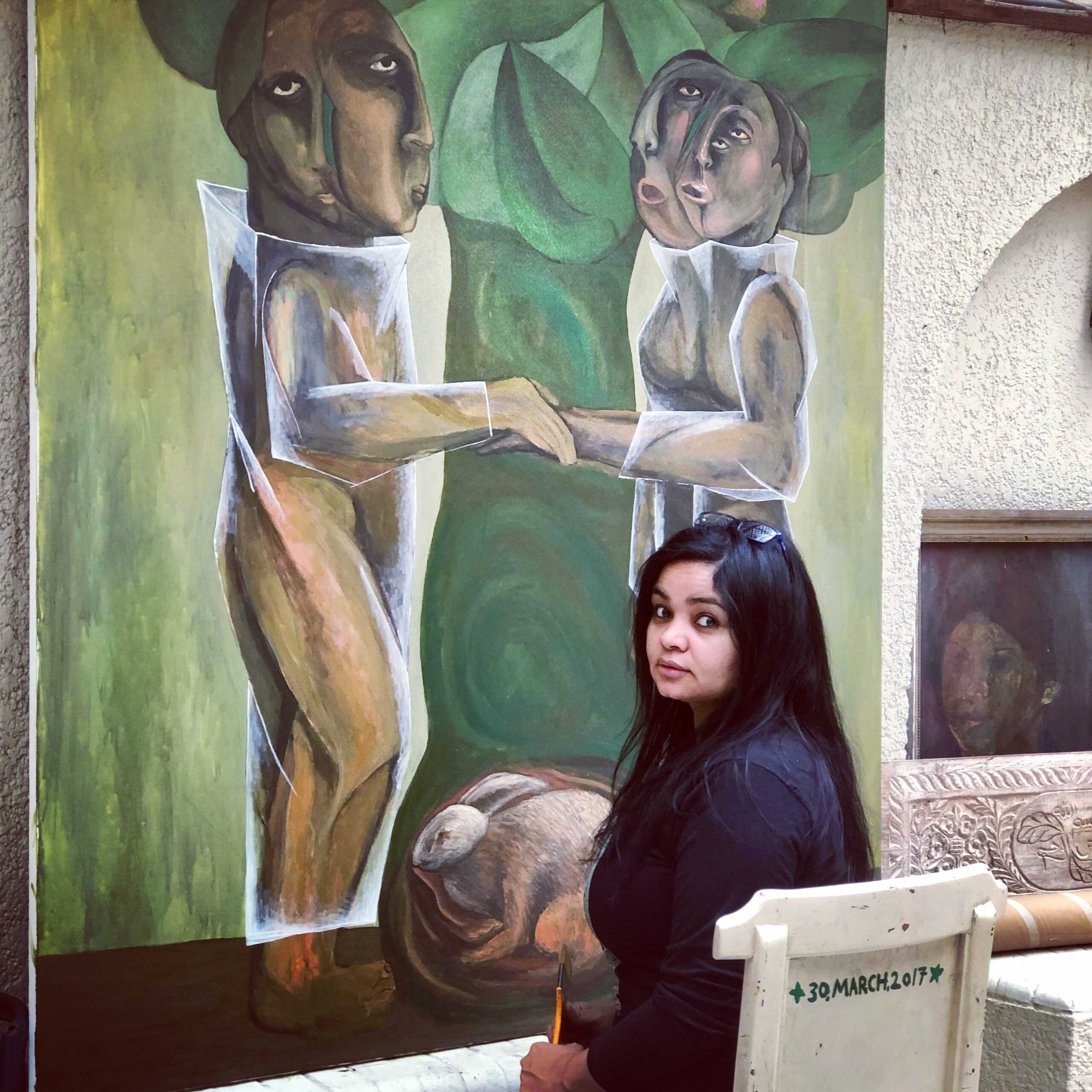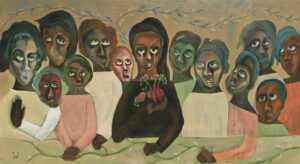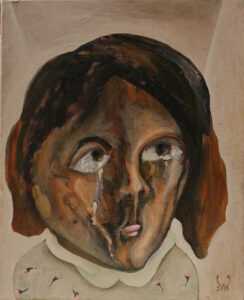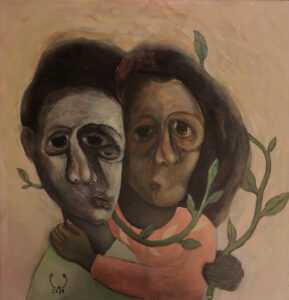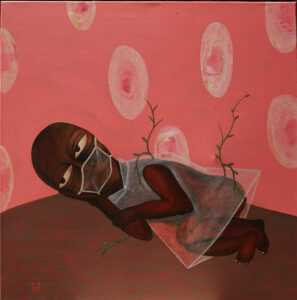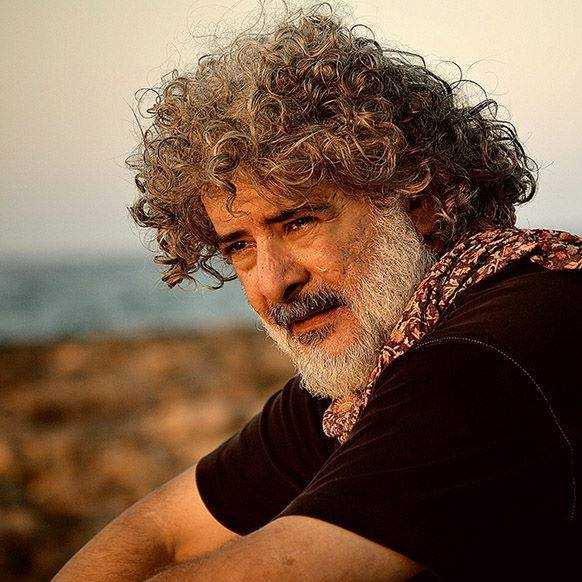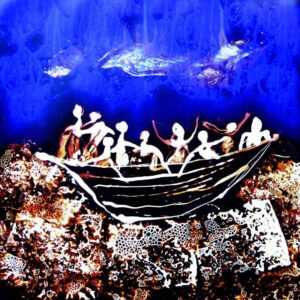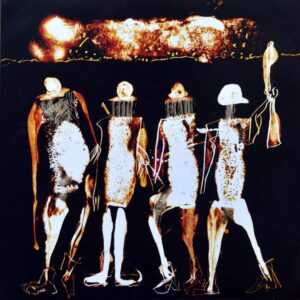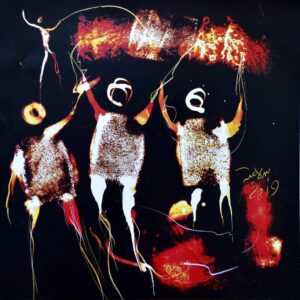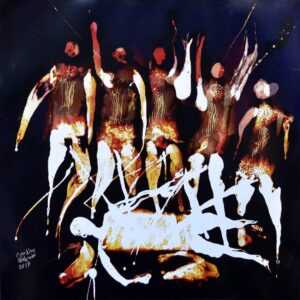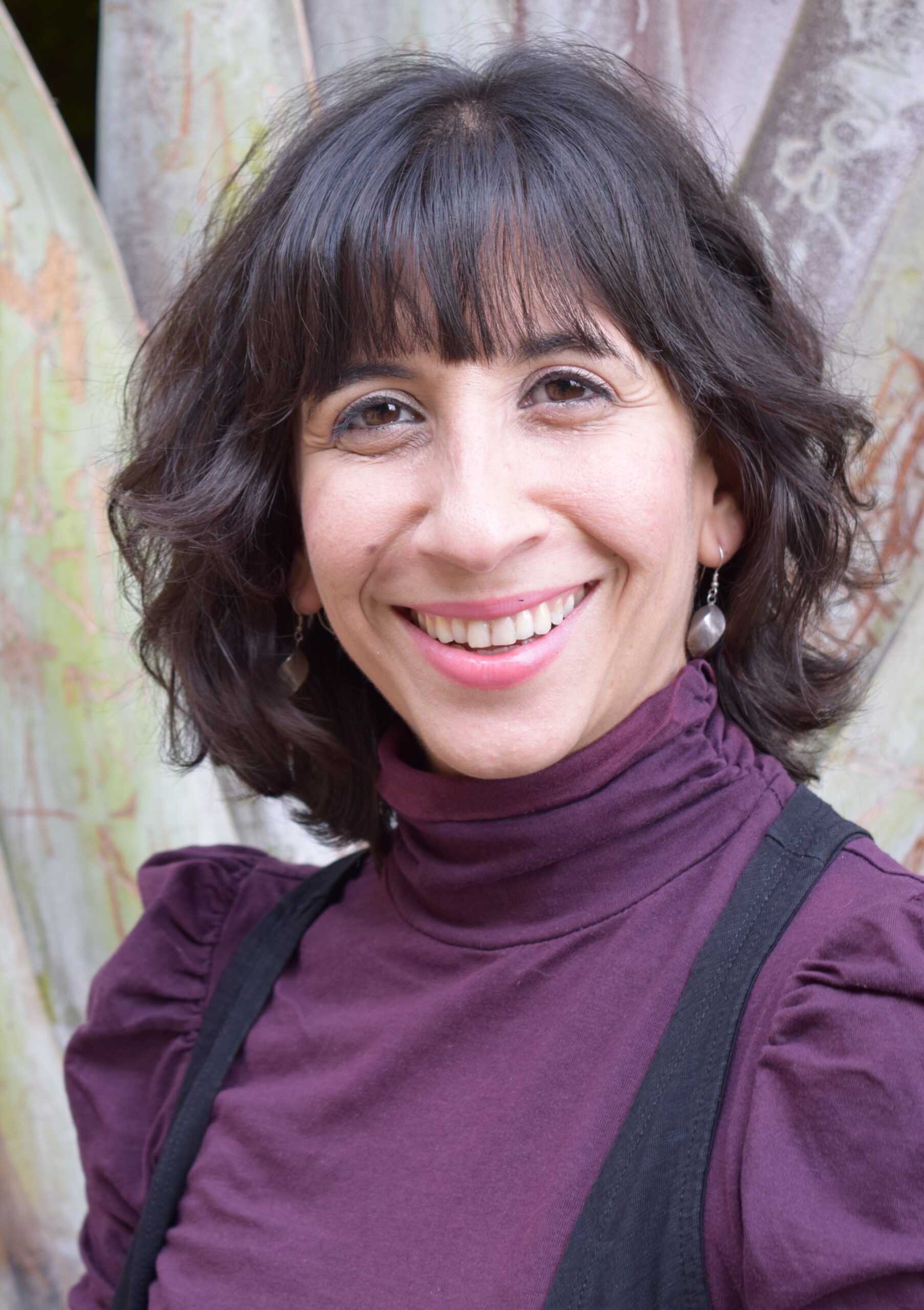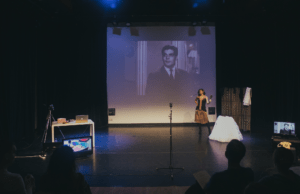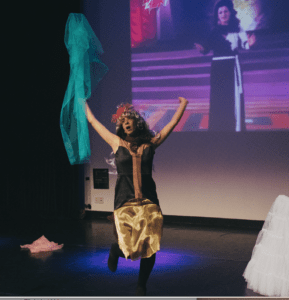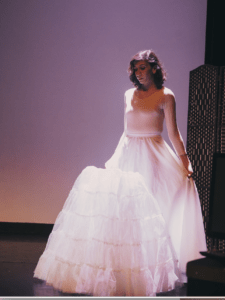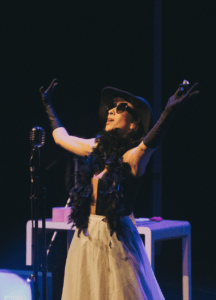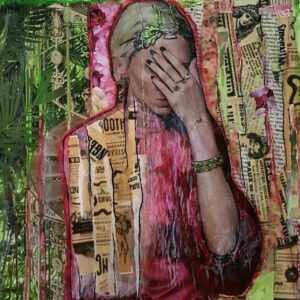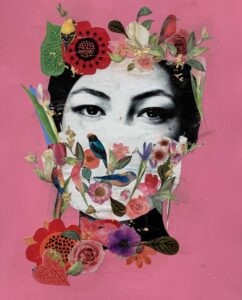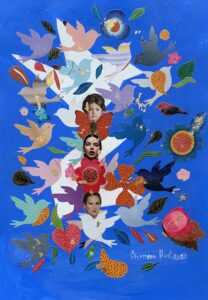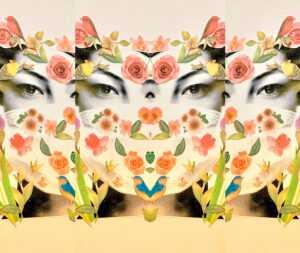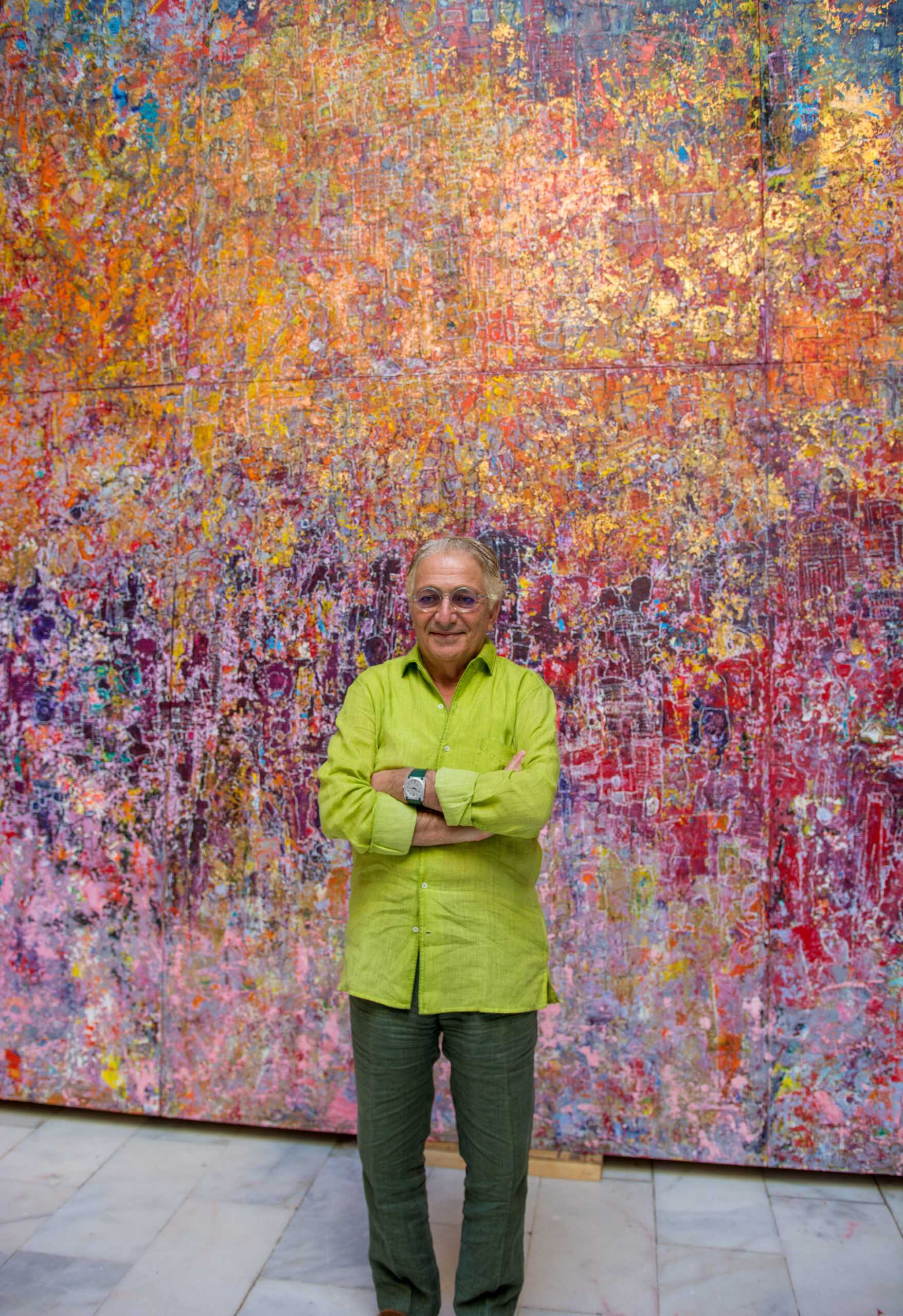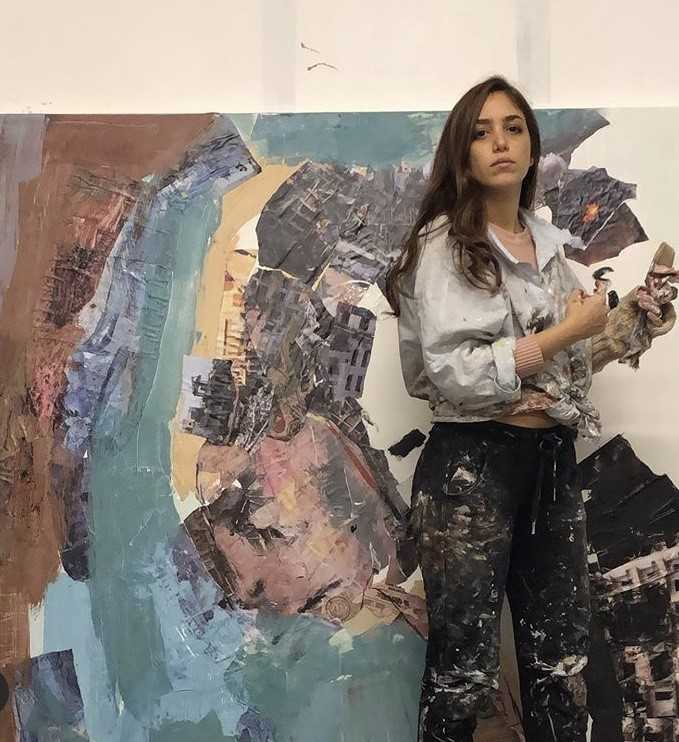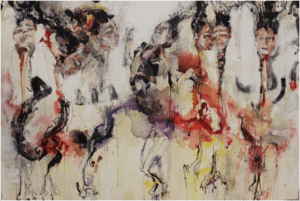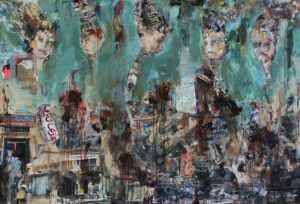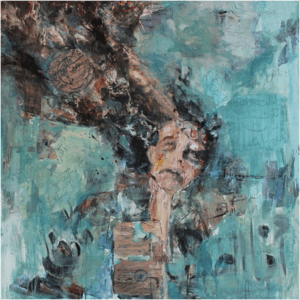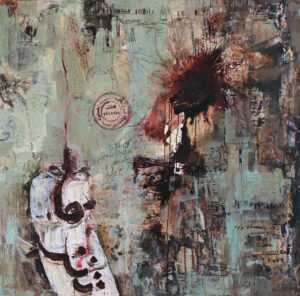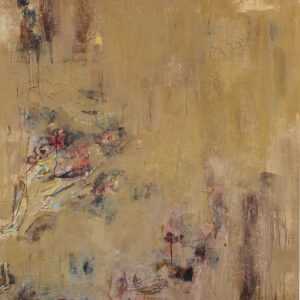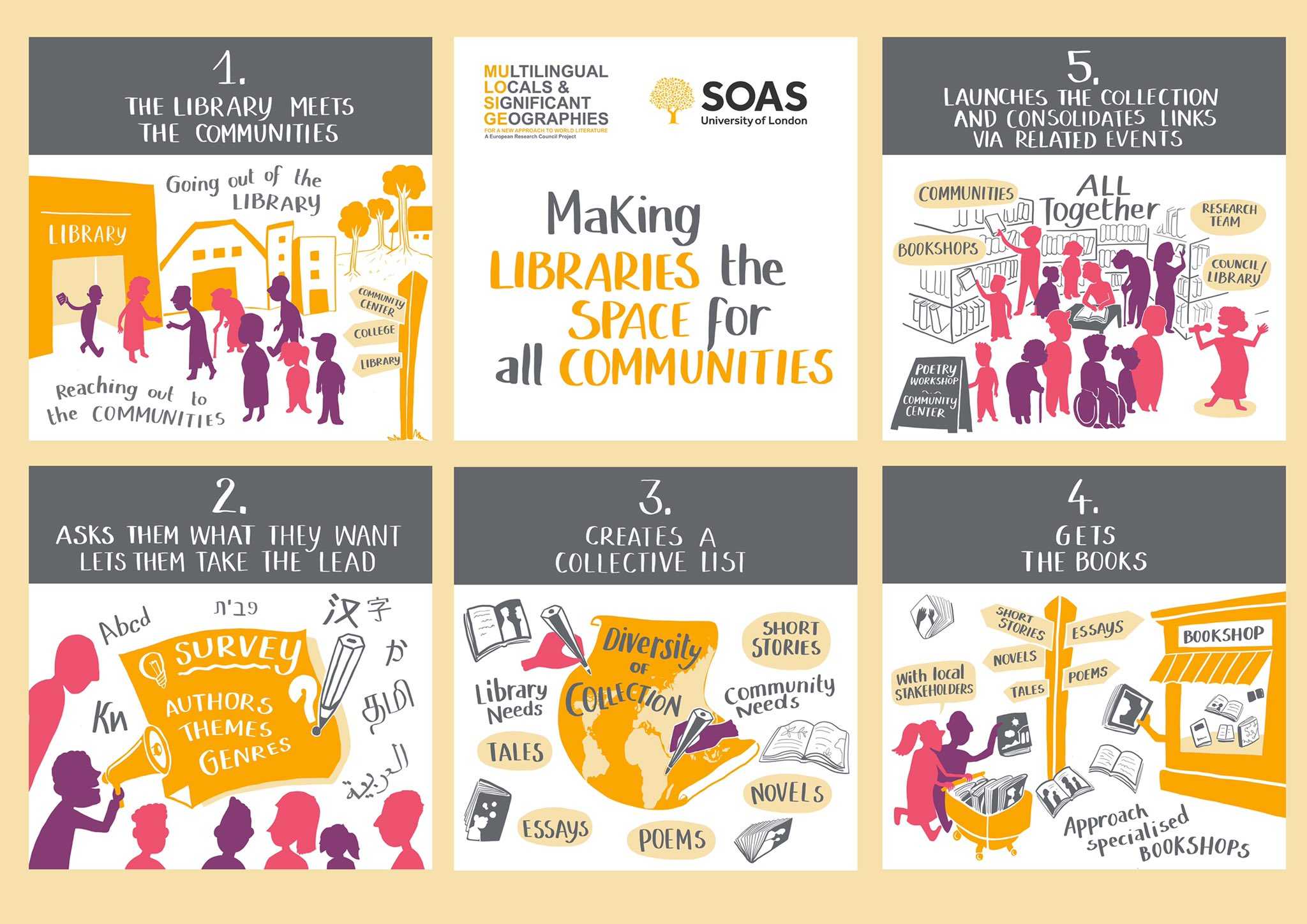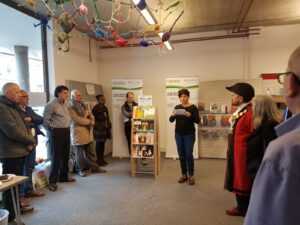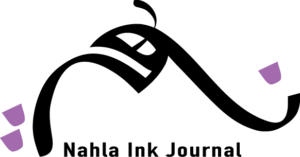Nahla Ink is thrilled to share the artworks of one of my favourite Gazan-Palestinian artists, Mohammed Joha. I first came across Joha’s work when he exhibited at the Rich Mix venue in East London circa February 2016. I was then introduced to him by Arts Canteen director Aser El Saqqa who curated that show titled ‘Joha – The Journey’. And so ever since I have been following his artistic development.
Featured this November are Joha’s works that belong to his most recent project, entitled ‘Fabric of Memory’, that sees his focus return to his home town of Gaza. He has been developing this idea since 2017 and is still ongoing. The pieces here are all textile and paper collages on canvas. They have already been exhibited in Dubai at the Tabari Artspace Gallery (January 2019), then at Art Abu Dhabi (November 2019), followed by a show in Kuwait at CAP and they will again be the basis of a solo show at Beirout Contemporary in Lisbon, Portugal (January 2021).
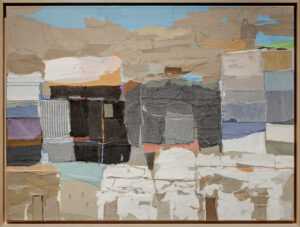
Artist Statement on ‘Fabric of Memory’:
Mohammed Joha: “How many times are we supposed to rebuild Gaza? How often are we supposed to memorise a new geography? How many new geographies will Gaza ‘wear’ each year? Nobody knows the answer to these questions, and it’s not even necessary, because these intuitive questions will find the many possible answers by themselves and raise many other questions about the reasons of what is happening in Gaza.
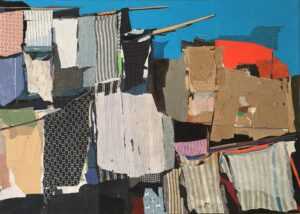
“The imposed, hated ‘renewal’ is a perpetual story with ongoing wars that affect everyone and everything alike – human beings, creatures, and things. Every two years, Gaza is forced to take off its old robe and put on a new architectural dress; the clothes-changing and the adaptation to it are exhausting and impoverishing Gaza every time more. Instead, it is longing for stability and continuity on the map.
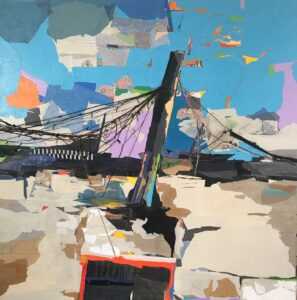
“Gaza has become a space that has no routine at all: when it’s war, it’s difficult to call it war, and living repeatedly through such radical transformation makes it almost impossible to cope, every time again, with a profoundly altered geography. The course of the streets, the shape of the houses, everything is different now. Here was a street surrounding a public park, and there was a hotel next to a tower, and an apartment building hosting a grocery store on its ground floor. Everything has changed!
‘A few years ago, there had also been a hospital, a government department, an institution, and a branch street open to another street… none of it is left.”
Indeed, Gaza is in all of our hearts, that will never change!
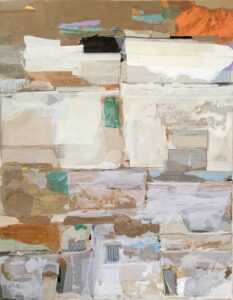
Biography courtesy of the artist:
Mohammed Joha was born in Gaza, Palestine in 1978 and currently lives and works between Paris and Italy. He graduated in Art Education from Al-Aqsa University inGaza in 2003, the same year he participated in a workshop residency in Darat Al Funun, Khalid Shoman Foundation in Amman-Jordan, supervised by artist Marwan Kassab Bacchi.
In 2004, Joha was the winner of the A M Qattan Foundation’s ‘Hassan Al Hourani Young Artist Award’, when he was elected Artist of the Year 2004. This allowed him to reside in the Cité Internationale des Arts in Paris in 2005, 2008 and 2017-2018, where he developed and strengthened his artistic personality.
Besides being selected for international workshops and residencies, Joha has participated in exhibitions worldwide. He has been working in the field of painting and has gathered a remarkable artistic experience. He is one of the most interesting artists from Gaza,Palestine who stands out by a very elaborate personal style of painting, a masterly combination of various artistic elements in his compositions, and most sophisticated messages. Through mixed techniques of painting, collages, installation, together with a most spontaneous, expressive style, much of his work has explored the questions and conditions of childhood and the loss of innocence and freedom experienced by generations of children in Palestine.
The overcoming of physical and psychological barriers imposed by conflict; revolutionary social and political events; resilience and identity are recurrent themes. The closer his works are examined, the more complex they become, in texture, content, and narrative. These multilayered, transformed representations of reality leave room for imagination and interpretation, because they are inspired by universal values and reflect the memory of a collective entity, without being bound to cultural restrictions or temporary or local individualistic gestures.
To follow Mohammed Joha’s art:
Instagram: https://www.instagram.com/mohammedjoha_art/
Facebook Fan page: https://www.facebook.com/Mohammed-Joha-Artworks-109900640914941
You might also like to read: https://www.nahlaink.com/interviews-mohammed-joha-palestinian-gazan-artist-joha-journey-exhibition/
